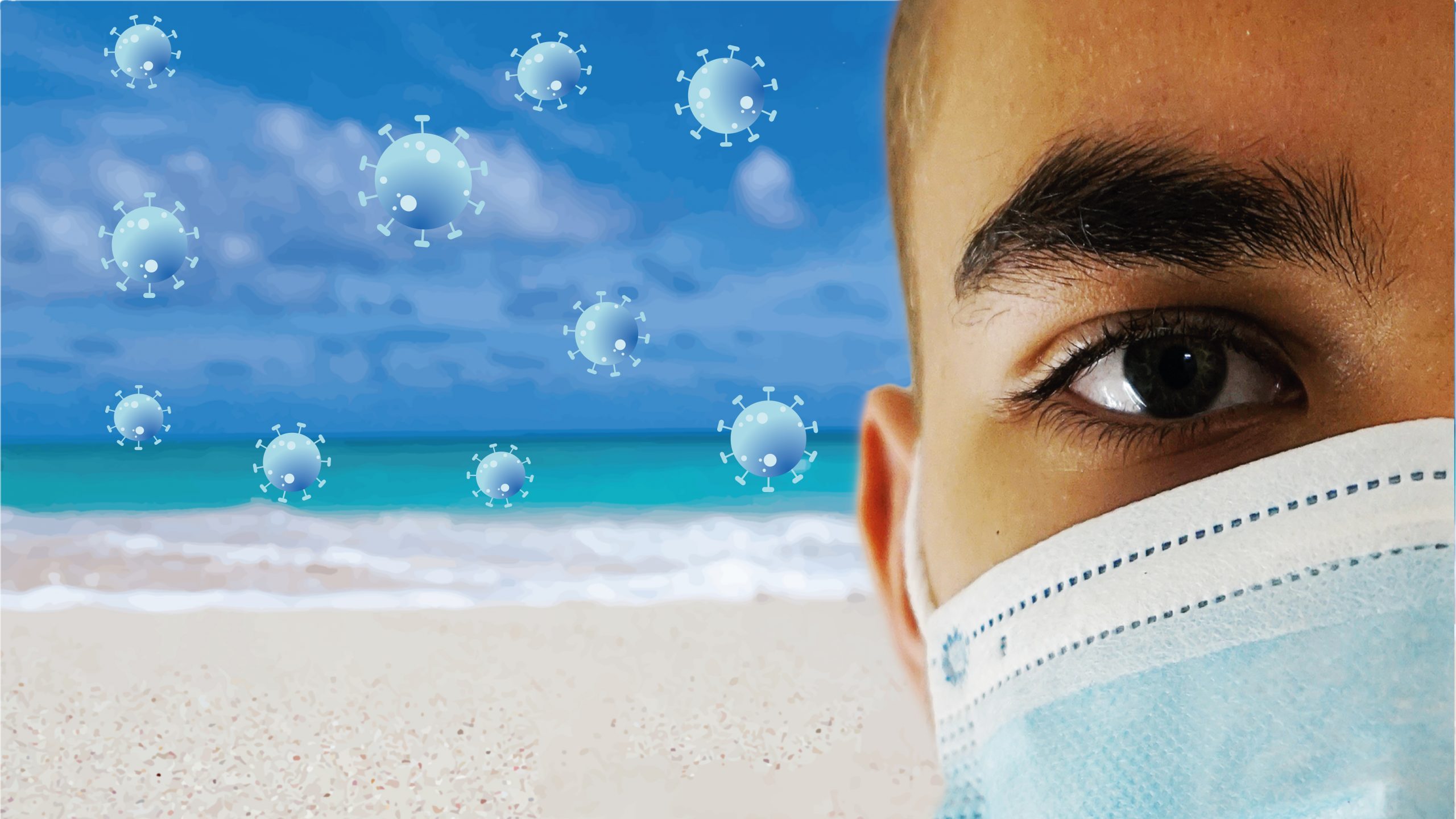Although the business of traveling is not what it once was, a semblance of normalcy is beginning to return.
Traveling abroad during a pandemic is no straightforward affair, from delays to roadblocks to unexpected twists and turns in the precarious maze of pandemic protocols. Nevertheless, my partner and I recently undertook a long-awaited holiday and found the inconveniences of COVID-19 still apparent, albeit less so than in 2020.
The plan was to leave Egypt for separate visits to our families and meet up in the United Kingdom. Between us, we hit airports in seven nations (Qatar, Australia, Singapore, Germany, the U.S.A., UK, and Austria), giving us a taste of how countries across different continents approached the pandemic. It’s safe to say responses to COVID-19 are not a one-size-fits-all endeavor.
That said, many countries have implemented more streamlined and efficient pandemic protocols, which meant it was a much less arduous journey door-to-door and during our stay than our U.K trip last November.
Down Under
My partner endured perhaps the most difficulty getting back home to her native Australia, which has instituted what many have argued is among the most stringent and uncompromising pandemic response measures. Entering and even exiting Australia is no small feat. All visitors, including citizens, undergo a mandatory 14-day quarantine at a designated government facility after providing a negative PCR test upon arrival.
Passengers get a police escort from their arrival at the airport to the hotel after completing a couple of hours of paperwork.
Luckily, her quarantine facility was not one of the grim new camps in the middle of the desert or near the airports, nor was it one of the many cheap hotels temporarily contracted by the government. Instead, she stayed at the luxury Westin Hotel in Brisbane’s prime Southbank area.
While quarantining, guests were permitted to order supplies and food from nearby retailers. She found the accommodation more than comfortable enough. The most trying part of her experience was the large window, with panoramic city views, that she couldn’t open for some fresh air. She spent her time talking to family, watching television, and doing whatever exercise she could manage in a limited space, including pilates, yoga, and stretching. At the end of the two weeks, police escorted her to the lobby to join excited family members waiting outside.
All this was at her own expense (AUD 2,800, about $2,000), despite the availability of a semi-rural family home.
While in Australia, she received both doses of the Pfizer vaccine, requiring an exemption letter from a medical practitioner as Pfizer was only available to specific age groups and essential workers. Her home state of Queensland also enacted lockdowns across populated areas, with residents directed to stay in their homes except for grocery shopping, critical work, health care, and other necessary tasks.
When it was time to leave, the Australian authorities required that she prove she was a resident of Egypt to exit the country on her way to the U.K.
Stateside detour
Our plan to meet in London was complicated because Egypt had been on the U.K.’s “red list” of coronavirus-affected countries since March. That meant passengers arriving directly from Egypt would be subject to a mandatory two-week quarantine at a somewhat dystopian-looking annex to Heathrow Airport, which costs over $2,000.
My partner did not have to quarantine because she arrived from Australia, one of the few “green list” nations. However, she did have to have a PCR test, after which she would be exempt from quarantine if negative.
Finding a way around the “red list” inconvenience, I traveled to “amber list” America for more than the minimum of 10 days required by the UK.
That allowed me to bypass the government’s expensive hotel requirement and quarantine instead at my brother’s house in London. That opened a “test-to-release option” on day five, cutting my quarantine period in half for the equivalent of $60 to $70, depending on the test provider.
My American citizenship allowed me to enter with no quarantine save for a PCR test taken within 72 hours of my outgoing flight’s departure, so I headed to California to see my family and friends. California was devoid of many inconveniences. The extent of the hassle involved only mask-wearing mandates in retail stores and public buildings, which the federal government reinstated due to a spike in COVID-19 cases.
The only genuine concern was producing a negative PCR test required for my trip to London: No one would guarantee a result within the specified time I needed to be considered “fit to fly.”
I was therefore forced to obtain my certificate from the testing center at the airport departure terminal. I investigated this option as a contingency plan when I arrived in the U.S., and the attending doctor advised me to come at least five hours before departure to ensure getting the results in time.
So I duly set off for the airport to spend most of my day there before my afternoon flight, with nothing on my mind but receiving a negative PCR test. I was on edge as I arrived at the terminal. Thankfully, my test was processed within 40 minutes, as there was no queue.
London calling
My partner made her way to London via Singapore, which she remarked was similar to Australia in terms of its heavy-handed approach to tackling the pandemic. The airport was empty, with duty-free shops shuttered and bustling travelers replaced by airport and security personnel.
We arrived in London only a couple of hours apart in mid-September during one of the last stretches of favorable forecasts before the creeping frigidity of autumn. With our pre-ordered PCR test kits waiting for us, we completed our self-swabs the following day, mailed them off, and received the results just over a day later.
While my partner was free to move about, I still had to submit my test-to-release swab on day eight, which came back negative the following day.
During my quarantine, I received two calls from the Home Office checking on my whereabouts and confirming my details, though there were no in-person visits. Several people advised us to be more vigilant during the restriction period, as we heard some horror stories of excessive fines.
In London, life had largely returned to normal, with streets, shops, events, and businesses full and in full swing. Wearing masks was optional. On the underground, intermittent announcements that passengers must wear masks were suggestions rather than a rule, which was not the case during our last visit last year.
Since my trip, the UK had removed Egypt from the “red list” effective Oct. 15, making it one of only seven nations. As of Oct. 11, vaccination certificates from Egypt’s Ministry of Health and Population are accepted by the British government, meaning that travel for Egyptians to and from London should now become an altogether more feasible and attractive proposition once again.
Vaccinated Egyptians will only need to submit a cheaper lateral flow test on day two upon arrival, while the pre-departure PCR test for the flights to Egypt is no longer required.
Australian vaccine certificates were not accepted as proof to enter Egypt because they do not have a QR code, so my partner still had to test.
The regulations are frequently changing, so it’s best to check Egypt’s https://www.egyptonlinevisa.com/travel-restrictions/ and the IATA Travel Center (www.iatatravelcentre.com/world) for updates.
Way back
Although London was where we had planned to end our vacation, sometimes the universe has plans of its own. Returning to Cairo via Vienna, we headed to the airport with PCRs in hand. By the end of the journey, I realized I had done a staggering six tests.
We were somewhat surprised to find out from the flight attendant at the boarding gate that our run-of-the-mill light blue surgical masks were not sufficient per Austrian law.
Instead, we were given industrial-grade 3M masks, which I hadn’t used before, and the difference in durability and comfort is hard to overstate. Suffice it to say, I made sure to save mine for future travels, as getting one of such quality in Egypt wouldn’t be possible.
Arriving in Vienna almost four hours before our flight to Cairo, we sat in a cafe with a view of the flight information screen showing boarding times. Due to me fatefully altering settings on both of our new phones with the intent of extending our battery time, I unwittingly removed the function that automatically updates time zones. Thus we arrived at the gate a full hour after our flight had departed.
It turned out to be a blessing in disguise. After scrambling to find a hotel room in the city center, we rushed to get new PCR tests in the airport, getting our results within 12 hours. We rebooked our flights free of charge, and that gave us almost two days to enjoy one of the most impressive and historic European capitals.
In Vienna, masks were required in all of the museums we visited. In addition, restaurants, bars, and cafes ask for proof of vaccination or a negative PCR test taken within the past week.
That was the first place either of us had experienced this, and frankly, it will take quite some getting used to being asked to show documentation to have a bite out or a quick coffee. Nothing dampened our spirits in Vienna, though, and we immersed ourselves in its splendid treasures of modern art, with collections to rival much larger cities like London or New York, in my opinion.
After making sure not to miss our flight again, we arrived back at Cairo International Airport to perhaps one of the most hassle-free and smooth arrivals I have ever experienced back home. Our bags were already gathered on a trolley waiting for us since they conveniently came on an earlier flight, and we breezed past the COVID-19 and passport control checks, which were completely devoid of any passengers.
We hastily removed our masks and breathed that familiar Cairo air upon stepping outside, happy to be back home once again.







